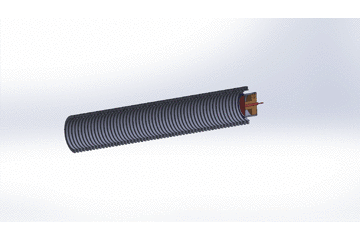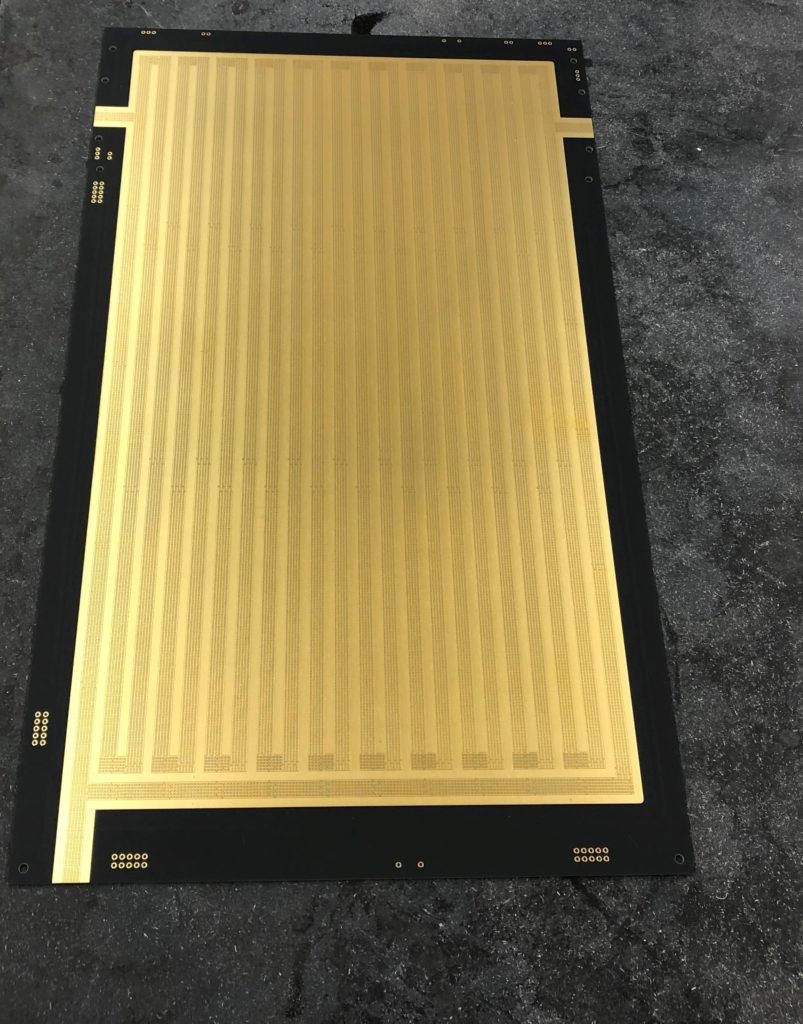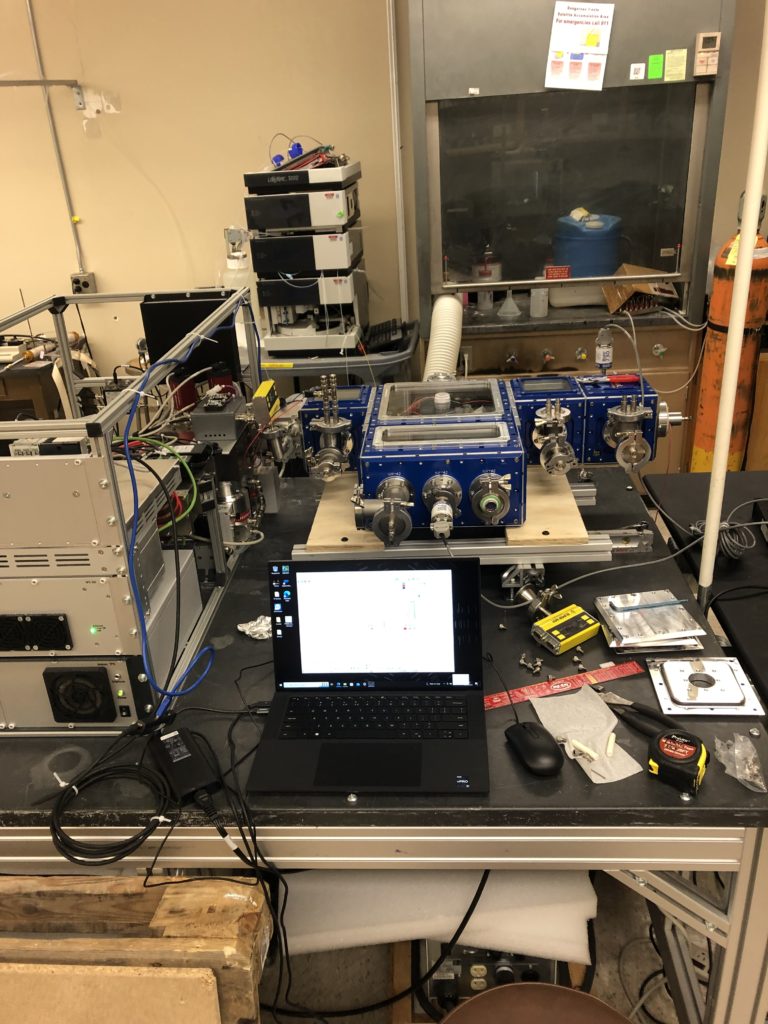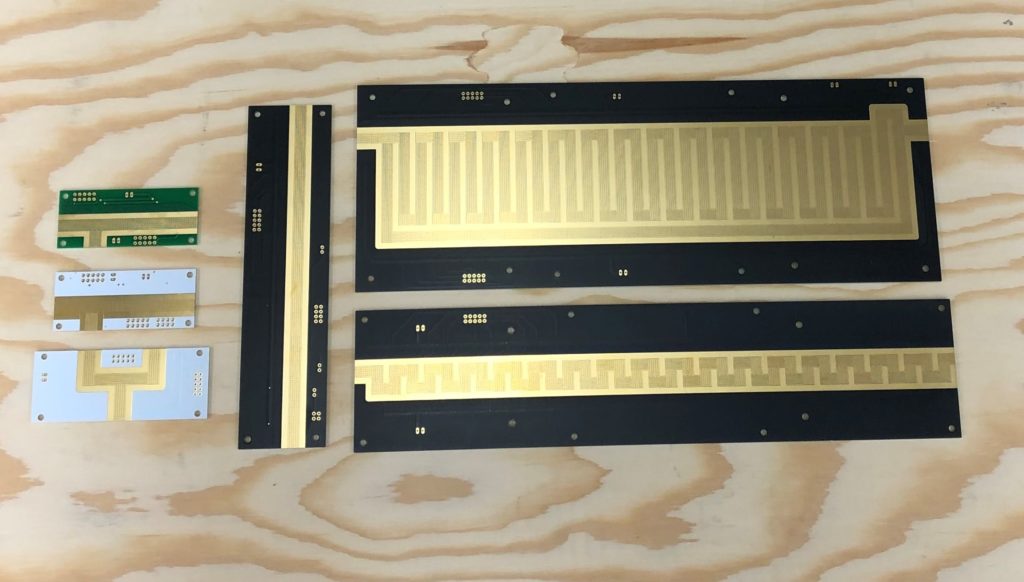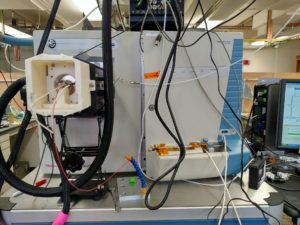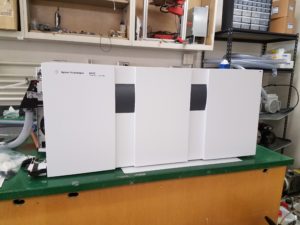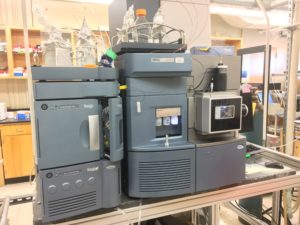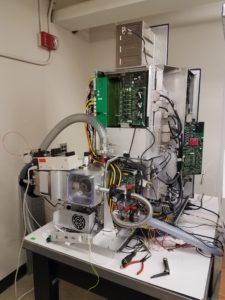Group Designed/Built Instrumentation

The core instruments designed and constructed in the Clowers Research Group are focus heavily on the accurate measurement of gas-phase ion properties. While stand alone ion mobility instruments are extremely useful in a field-based setting, the combination of this technique with mass spectrometry provides a second dimension of analysis which is extremely powerful. The research ion mobility instruments being constructed in our laboratory include both high (760 Torr) and low pressure (~4 Torr) instruments both capable of operating at a range of temperatures. Below is a rough schematic of our latest stacked-ring IMS system which includes a variable pressure housing to enable a wider range of E/N values to be explored.
Structures For Lossless Ion Manipulations (SLIM)
Our group has had a long-standing interest in structures for lossless ion manipulations (SLIM) and are actively engaging in research concerning traveling wave SLIM (TW-SLIM) platforms. Our TW-SLIM research is performed using SLIM boards of varying size and complexity, each of which was designed by members of the Clowers research group. More recently, we have paired one of our larger SLIM boards with Ionicon’s ioniTOF4000 time-of-flight mass spectrometer.
Variable Temperature Drift Tube IMS

Our group is interested in looking at gas-phase ion chemistry experiments such as ion-neutral clustering and hydrogen/deuterium exchange (HDX). We developed this heated FlexTube system to suit the applications benefitting from variable temperature experiments. Not pictured, we have machined a case that can be lined with heaters. By combining site-specific ion-neutral clustering and a simultaneous HDX, we obtain data to make inferences on the three dimensional structure of ions as they move through the drift tube.
Commercial Instrumentation
Additionally, the Clowers Research group has a variety of commercial ion mobility spectrometers and mass spectrometers available for a variety of applications. Some of the most utilized instruments in the lab include:
Three LTQ ion traps, which serve as an analytical workhorse in the laboratory. It finds uses ranging from standard proteomic experiments and method development. In addition to standard LC-MS experiments, this has now been modified to include a rear optical port compatible with UV photodissociation experiments. This instrument, which still retains its original functionality, now includes a removable ion mobility drift tube with enables a range of hybrid IMS-MSn experiments combined with photofragmentation.
An Agilent 6410 triple-quad mass sepctrometer with an atmospheric flow tube attached to the inlet. This instrument is primarily utilized for studying ion kinetics for the behavioral study of chemical warfare agent simulants.
A Waters Aquity- UPLC-MS which has been used not only to characterize metabolites of N. fowleri in water samples, but also used to analyze samples from inter-departmental collaborations, such as analyzing metabolites in dog plasma and rat brains.
A Bruker prototype TIMS attached to a microTOF III, which is primarily used to bridge the gap between mobility fundamentals of drift tube IMS and trapped ion mobility.
